Before burying himself with an army of 8,000 terracotta soldiers, Qin Shi Huang ruled China with a single philosophy: "Burn the books, bury the scholars."
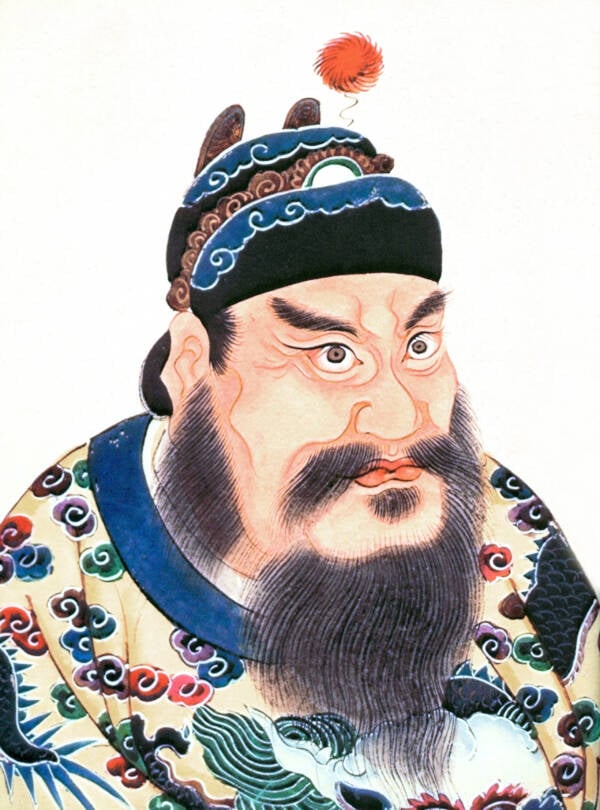
Wikimedia CommonsAn 18th-century imagining of China’s first emperor, Qin Shi Huang.
In April 1974, Zhao Kangmin, the director of a small public antiquities collection in central China’s Shaanxi province, heard that some nearby villagers might have stumbled upon something interesting.
The farmers, digging a well, had unearthed a bunch of disarticulated body parts made of clay. Based on the location, Zhao suspected that the clay parts would be an important find, and he got on his bike and rushed to see them.
His hunch was right. The discovery that he identified would rank as one of the most spectacular archaeological finds of all time. The Terracotta Army comprised 8,000 clay soldiers, each with a unique face, which filled the tomb of China’s First Emperor.
Qin Shi Huangdi, also called Qin Shi Huang, founded China’s first united imperial dynasty in 221 BC. The Qin Empire would last fewer than four years after his own death, but long afterward, his legacy would affect the lives of the Chinese people long after his passing.
Qin Shi Huang: Building An Empire
Qi Shi Huang’s contemporaries didn’t remember him fondly. The man went down in history as a byword for brutal tyranny.
Born Ying Zheng, or Zhao Zheng, to the royal house of Ying in 259 B.C., the future emperor was the heir of the king of Qin. The Qin state was one of seven kingdoms that remained in central-eastern China after centuries of war and conquest.
Zheng, who ascended to the throne as a child, completed the subjugation of the six rival states by the time he reached his late 30s. To mark a status beyond that of king, Zheng took the name Qin, for his homeland, and the title Shi Huangdi, meaning First Emperor, and evoking a mythical past.
The First Emperor began construction on his tomb complex in 246 B.C., and it was still being expanded when he died 36 years later. A reported 700,000 workers constructed the complex — and this was only one of many major engineering projects Shi Huang spearheaded.
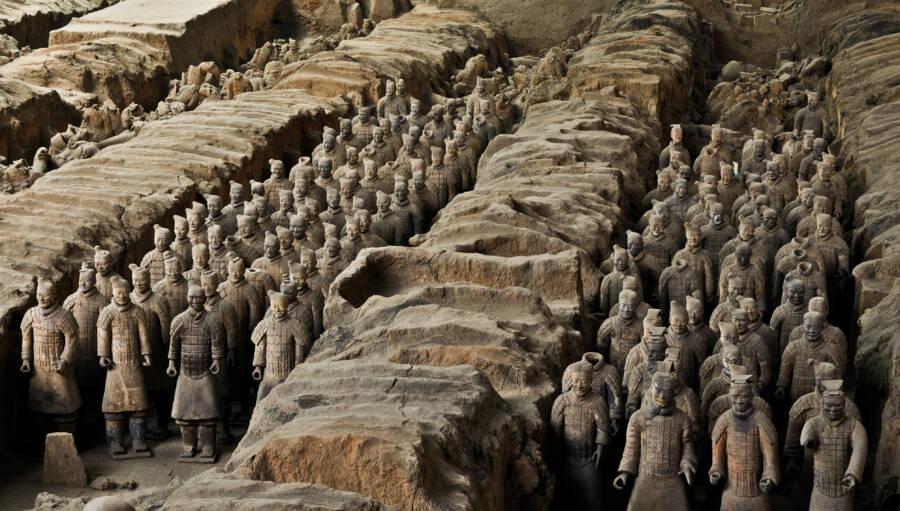
Christels/PixabayQin Shi Huang’s Terracotta Army numbered approximately 8,000 soldiers, all situated in canals surrounding his tomb.
Traditional histories trace the origin of what we call the Great Wall to Qin Shi Huang — although people at the time wouldn’t have used that name for it.
He expanded existing northern fortifications and sent 300,000 troops to pacify the frontier. Prisoners augmented soldiers in the labor force. Estimates of those who died on the job range in the hundreds of thousands, and for centuries the walls remained a symbol of bitter toil rather than national pride.
The Qin Dynasty ramparts wouldn’t have resembled the familiar, later iterations of the Great Wall, which are merely 500 years old. Instead of bricks, early walls were built using rammed earth, as well as natural features like mountains.
Workers filled large wooden containers with soil, which they pounded with mallets, producing a solid mound subject to weathering. Most walls from the Qin era and earlier have long been covered over, repurposed, or just forgotten, but the model of a fortified frontier would endure.
One China
The sense of a single, united China may be the First Emperor’s most profound legacy. Qin Shi Huang did away with the political structures of the former rival states, replacing them with a system already in use in his homeland.
No longer would nobility pass proprietary fiefs to their children. The Qin model was a centralized hierarchy, appointed by the emperor.
Reforms were thoroughgoing. Under the leadership of Li Si, Shi Huang’s most trusted advisor, weights and measures were standardized, as was coinage. A uniform writing system eliminated regional variations; with modifications, the official Qin script provided the basis for modern Chinese characters.
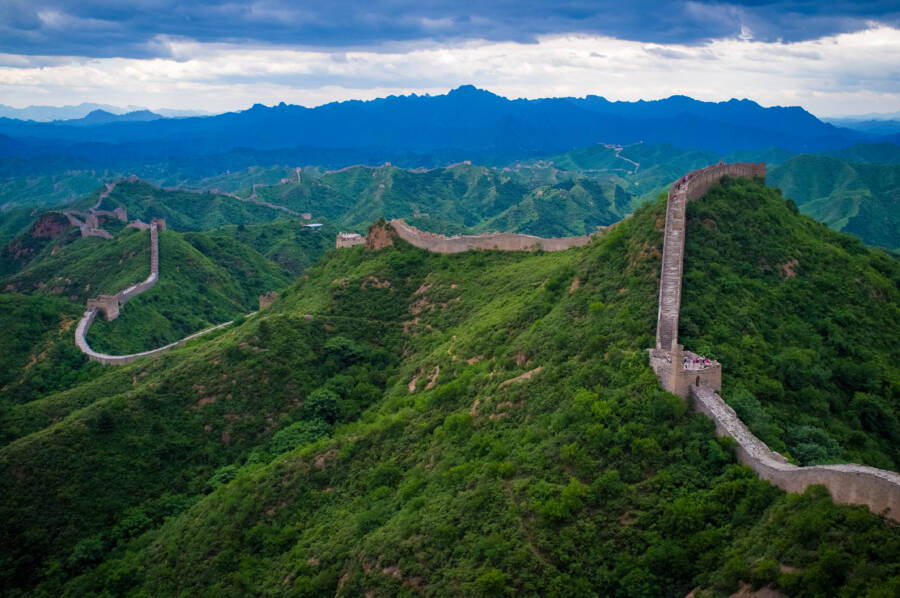
Wikimedia CommonsThe iconic brick and stone fortifications at Jinshanling, near Beijing, date from the 16th century, but they follow a precedent started centuries earlier.
Qin Shi Huang spent much of his reign touring the empire, and roads were often built at his command. The southern part of the domain was hard to reach, so the emperor ordered the digging of a canal to join the Yangtze and Pearl Rivers.
All of this construction required an unbelievable amount of labor, and the grueling conditions of work helped earn the First Emperor his reputation as a tyrant.
The ruling philosophy of the Qin state was Legalism, a code known for its unwavering and often brutal punishments. The more severe the offense, the more severe the nature of punishment, ranging from a stern lecture to branding, mutilation, and of course, execution.
“Burn The Books, Bury The Scholars”
The main rival to Legalism was Confucianism, which prized benevolence, harmony, and piety. Legalism, on the other hand, started from the principle that people only respond to rewards and punishments, and had no interest in cultivating anyone’s better nature.
To stamp out dissent, the advisor Li Si recommended a policy of censorship, remembered in the saying “burn the books, bury the scholars.”
The order was to destroy all texts that didn’t serve a practical function. Except for records of the Qin state, history books were out, since they provided material for veiled criticism. Possession of banned books was a capital crime, but some scholars held onto their texts. Those discovered were buried alive. Qin Shi Huang’s oldest son, Fu Su, protested, and was sent to the northern frontier.
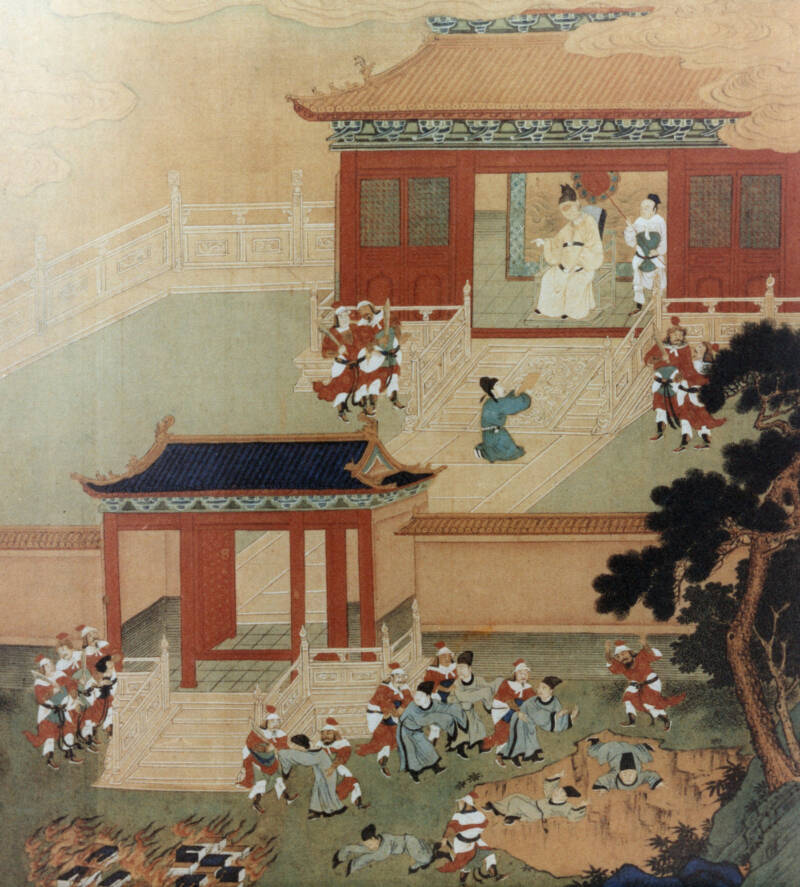
Sovfoto/Universal Images Group/Getty ImagesLater generations remembered the censorship campaign with horror.
Assassination plots started early, before the wars with the rival states finished in Qin’s favor. In a famous episode, the emissary Jing Ke, from the state of Yan, brought tokens of submission: the head of a rebel general and a map of land to be ceded.
Already paranoid to the extent of fearing his own staff, the future emperor alone was allowed to carry a sword in the throne room. The map, however, concealed a knife. The ambassador attacked.
The king managed to fight him off, but it was a close call. Two other attempts on Qin Shi Huang’s life followed.
Qin Shi Huang hoped for literal immortality. He sought out alchemists who might hold such a secret. Some told him what he wanted to hear, and so he began a regimen of health supplements rich in mercury, which would drive him to madness before killing him.
Qin Shi Huang’s Inglorious End
The emperor must have doubted his medicine’s efficacy, as he dispatched delegates on a voyage to a legendary island of immortals. The first group disappeared, and a second mission reported that they’d been scared by a large fish.
Qin Shi Huang went to the shore to kill this fish, shooting at it with a crossbow. But the sea creature was now irrelevant, because the emperor was already sick to the point of dying from the mercury poisoning, and he realized the end was approaching.
He gave word that Fu Su, the oldest of his 30 sons, should succeed him to the throne. But the adviser Li Si would betray the sovereign’s dying wish, believing that he personally would fare better under one of the younger sons.

Wikimedia CommonsQin Shi Huang, in a portrait from circa 1850.
Li Si had to hide the news of the emperor’s death as long as possible. The corpse remained in a covered vehicle, and a cart of fish was added to the cortege to disguise the stench.
Back at the capital, one of Qin Shi Huang’s youngest sons seized the throne. He promptly murdered his brothers and his father’s concubines. In less than four years, the second emperor was dead. Forty-five days later, the Han Dynasty rose to power.
Judging The Evidence
Except for a very few details, all of the early writings about the First Emperor comes from Sima Qian, an official historian of the Han Dynasty.
Writing almost a century after the fact, Sima Qian would have had incentive to recount the worst stories about the previous regime. Modern historians consider Sima Qian a crucial source, but don’t take him at face value. The only other early records about Qin Shi Huang are self-praising inscriptions the emperor posted around his realm.
The discovery of the Terracotta Warriors came at a fortuitous moment. During China’s Cultural Revolution of the late 1960s and early 1970s, youth brigades known as the Red Guards engaged in a campaign to destroy the past, raiding temples and smashing artifacts.
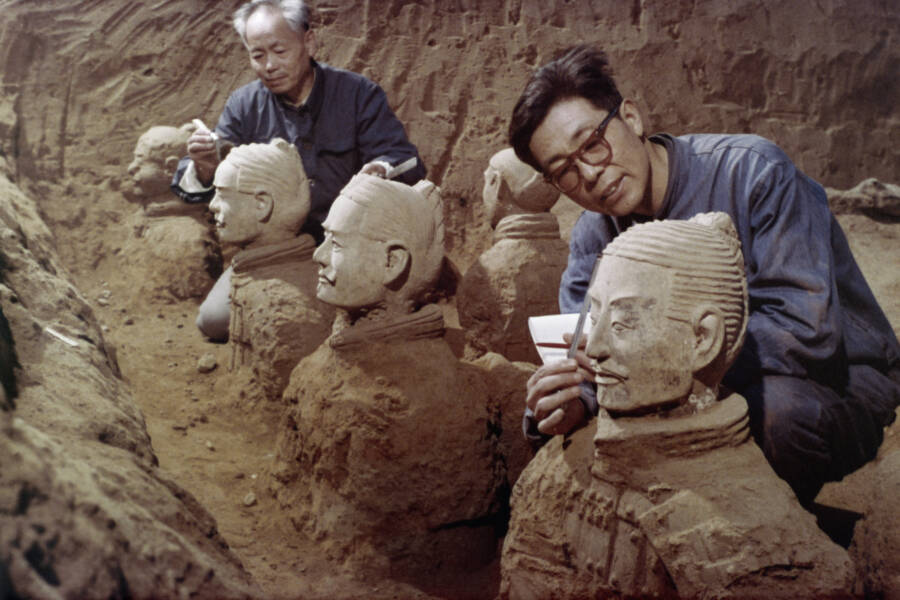
Daniele Darolle/Sygma/Getty ImagesArchaeologists excavate the Terracotta Army in 1980.
Things had calmed down by 1974, but the archaeologist Zhao Kangmin was reticent even then to publicize the two statues he painstakingly restored.
As excavations continued, more details of life in the Qin era emerged. Graceful brass cranes, clay acrobats and musicians, and terracotta court officials with writing utensils came to light, offering a look at the civilization behind the military.
Masses of skeletons, however, lent credence to the story that the builders of the emperor’s tomb were murdered upon its completion. At the center of the sprawling necropolis stands a 168-foot mound, thought to contain the First Emperor’s remains.
Sima Qian never mentioned the clay army in his writings, but did note additional wonders within the central tomb: a model landscape with rivers flowing with mercury (soil samples from the vicinity show a high level of mercury). Remote sensing indicates a treasure hoard.
For now, though, there isn’t a way to excavate the chamber without risking damage to its contents. Even with the spectacular finds to date, more remains to be discovered about Qin Shi Huang, the man who united China.
After reading about Qin Shi Huang, learn all about China’s first female emperor, Wu Zetian. Then take a look at the disturbing practice of Chinese foot-binding.





